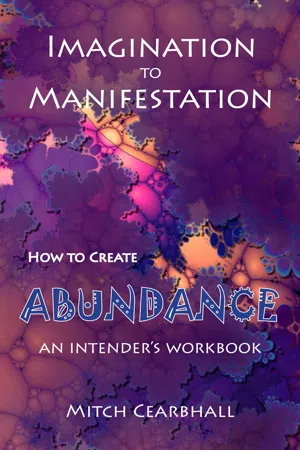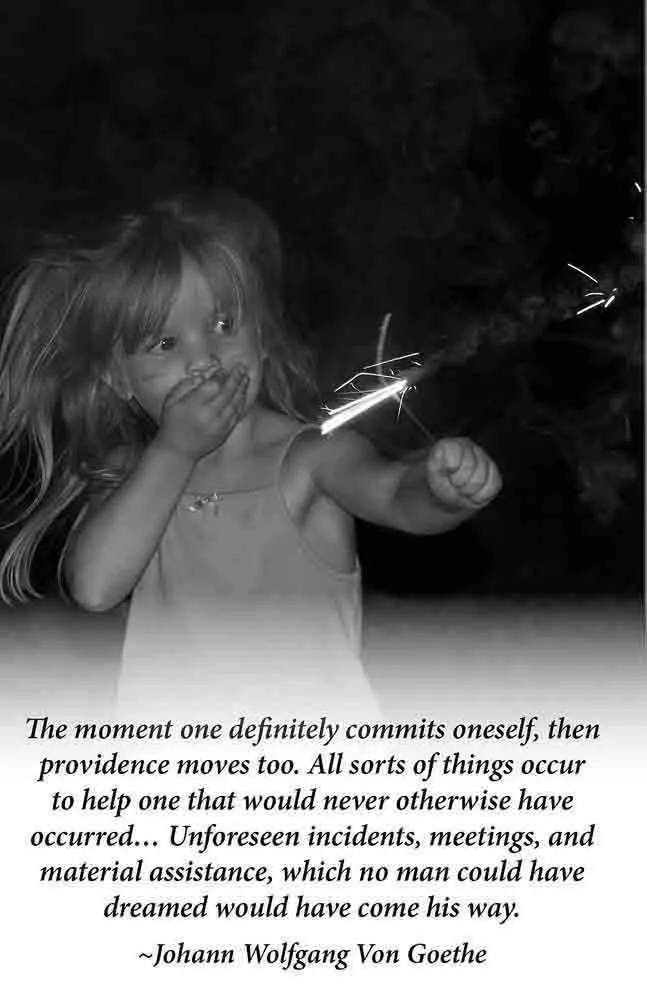
Imagination to Manifestation
How To Create Abundance - an intender's workbook
- English
- ePUB (mobile friendly)
- Available on iOS & Android
Imagination to Manifestation
How To Create Abundance - an intender's workbook
About this book
"Imagination to Manifestation provides a fascinating and helpful overview on the topic of intention setting. I highly recommend that you read this book."
— Tony Burroughs, Author & Cofounder, The Intenders of the Highest Good
"Weaving together truths from many of the world's wisdom traditions and illustrated with quotes from Gandhi, Einstein, Walt Whitman, Rumi, and many others, Mitch Cearbhall leads the reader on a journey into the world of intention, exploring the power we have to re-image our lives, finding fulfillment with each step we take into the Mystery of our purpose for being alive.
We are reminded of the crippling quality of negative attitudes, and the power of forgiveness to clean our mind of images which frustrate our better intentions. We learn to explore the differences between pleasure and happiness, and how to bring our mind into alignment with our intention. We go even deeper into the relationship between thoughts and emotions in both the conscious and subconscious mind, and see the benefits of being both strong and flexible as we develop virtue and find the power of gratitude to bring us to the threshold of revelation.
Of great benefit are the exercises in guided imagery and letting go of unhelpful thoughts so that we can reprogram our mind's tendencies to default to negative interpretations and pessimism. The work offers practical techniques to turn our mind so that we image forth our positive intention, allowing us to give and receive blessings throughout our lives.
This is truly 'an intender's handbook,' and all who dive deep into its message will find facets of wisdom which allow them to be more aware of when and how to turn negative attitudes to positive intention. Enjoy the journey of self-discovery, and become your highest intention!"
— Robert Wilkinson, author of Saturn: Spiritual Master, Spiritual Friend; A New Look at Mercury Retrograde; & Love, Dad: Healing The Grief of Losing A Child. He is the publisher of www.aquariuspapers.com.
Frequently asked questions
- Essential is ideal for learners and professionals who enjoy exploring a wide range of subjects. Access the Essential Library with 800,000+ trusted titles and best-sellers across business, personal growth, and the humanities. Includes unlimited reading time and Standard Read Aloud voice.
- Complete: Perfect for advanced learners and researchers needing full, unrestricted access. Unlock 1.4M+ books across hundreds of subjects, including academic and specialized titles. The Complete Plan also includes advanced features like Premium Read Aloud and Research Assistant.
Please note we cannot support devices running on iOS 13 and Android 7 or earlier. Learn more about using the app.
Information

Table of contents
- THE CALL OF THE OPEN ROAD
- FOLLOW A HIGHER PATH
- FOLLOW YOUR INTENDED PATH
- THE PATH OF IMAGINATION
- THE ROCK IN THE PATH
- THE PATH WITH HEART
- OUR COMMON PATH
- THE PATH OF TRANSFORMATION